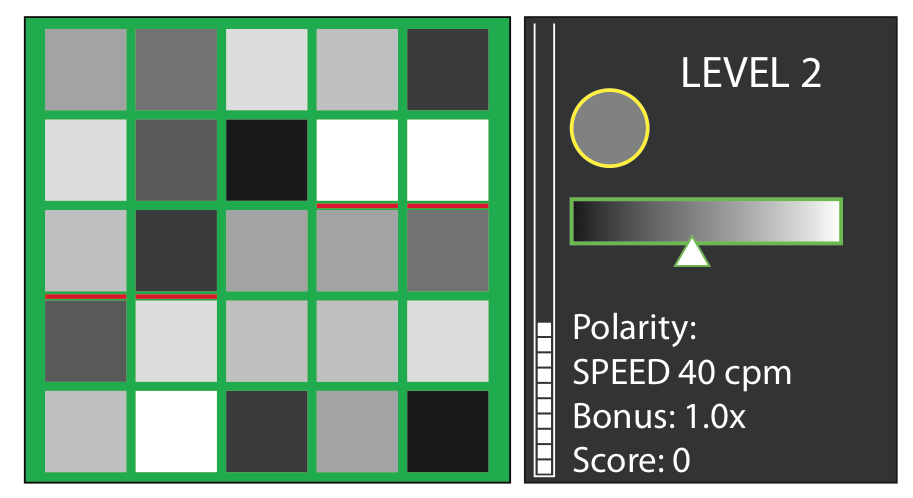Hybrid Harmony
(Prototype)
Role: Designer/Programmer
Date: 2011, 2014
Tools: Java, LibGDX
The object of this game is to create a color close to neutral gray by pointing-and-clicking a single square, then dragging over adjacent squares to blend their colors. The closer to "perfect gray" the colors are when the player releases the mouse button, the more time is added onto the clock. I was hoping it could work as a “meditative experience” as players tried to keep balance across shades of gray.
Design
I formed three design pillars for this game:
Focus on the Theme: Player decisions had to involve the color spectrum balance mechanic in order to reflect on the theme of “balance.”
Consistently Focus: Player decisions had to be non-trivial to make sure players keep the theme in their mind as often as possible.
Never Let Players Get Bored: The challenge increases to accommodate player’s increasing skill level.
The design went through several iterations. The game began simple: click and drag squares to mix colors, submit them and get points based on their numeric value’s proximity to perfect gray. It was boring for playtesters, though.
Each new mechanic had to fulfill 2 requirements: support one of the three design pillars, and reinforce the theme of “balance between shades of gray.” Several mechanics were added: walls would appear and prevented players from connecting adjacent squares, vial sizes were restricted, a game over condition representing time in an hourglass (that fills and empties based on player activity), I imposed mandatory endpoints on the grid for each blend group.
Feedback from testers was positive. They all thought it was a great original concept and were so excited they shared their ideas with me. One tester ignored instructions and played the game in a way that led to a different mode of the game or a different game altogether. It’s possible the most fun version of this game requires abandoning the “balance” aesthetic altogether.
